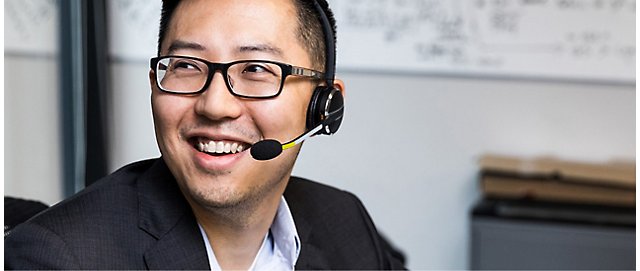Arizona may have been the last of the contiguous states to be admitted to the Union, but its Motor Vehicle Division (MVD) continues to build on a history of technology initiative firsts. As part of the Arizona Department of Transportation (ADOT), MVD led the nation more than 20 years ago with ServiceArizona.com, the first United States online service for residents to renew vehicle registrations, driver licenses, and perform other tasks remotely.


Fast-forward to April 2020, when MVD innovation takes another leap forward with a modern, cloud-powered super portal delivering secure, improved, and expanded online services—and offering the potential to transform other government transactions. Best of all, the new MVD system resulted from a unique funding model that didn’t cost Arizona taxpayers a single additional penny.
Delivering greater value
According to Eric Jorgensen, director, Motor Vehicle Division, Arizona Department of Transportation, technical obsolescence was the first driver of change that led to the Motor Vehicle Modernization Project (MvM). “We were getting to a point where we could not maintain the existing system; it was 40 years old,” he explains. “At the same time, the world kept changing … and it was very difficult for us to make those changes. There was not a lot of flexibility in the system.” The ultimate impetus to modernize? A realization that the agency was being held back from delivering greater value to customers. “We needed to change so that the tools, instead of [being] a roadblock to delivering value, became the highway on which we delivered value to the customer,” he says. “We had a real push to do things in a way that would allow customers to self-serve … when they wanted, how they wanted, [and] to give them flexibility, which just wasn't available in the old system.”
MvM project director David Knigge notes another key challenge was overcoming the siloed transactional model of ServiceArizona—typical of most government systems—which leads to “high degrees of inaccuracy, high risk of fraud, [and] the inability to detect those fraudulent activities.”
Unique funding model
While MvM formally kicked off five years ago, Knigge looked back to 2010 to provide context for the project’s unique funding model. Recognizing the looming “train wreck” of the existing system and knowing state-appropriated funding for a large IT project “was just not going to happen,” Knigge says the team found an alternative in MVD’s long-term, directed-investment contract with IBM. That agreement required a certain portion of ServiceArizona fees to be reinvested in technology improvements. “The innovation that came with this new model was we renegotiated our contract … to make it much more directed by the state as to how those investments would occur,” Jorgensen says. “And so we were able to do a very large project—by the end, north of $60 million – [by] redirecting those moneys that IBM had been investing in the old system to building this new system … at no additional cost to the taxpayer.” Knigge adds that he’s seen similar “claw-back” or benefit-based funding models in private industry, but “in the government space, it’s quite rare.”
Out of the line and safely on the road
With the innovative funding model in place, Jorgensen says the 90-member MvM team began with a question before the project’s 2015 kickoff: “How do we better engage the citizens of Arizona with the Motor Vehicle Division?” That led to defining a vision. “For us, it was ‘out of the line and safely on the road,’” he says. “Whatever it was [people] needed from us, we wanted to get them there safely and without having to waste their time and resources.”
About halfway into the project, the vision started expanding beyond MVD. “I think we began to really see it is about how state government engages with the citizens,” Jorgensen says. “As we've gone along, we've realized that there's so much more. This is about identity, it's about authentication and it's about authorization to do something – to somehow engage with another entity online. Our drivers’ licenses are the most used and accepted form of identification in the United States. Being able to drive this identity, really becomes the core of us being able to do things remotely.”
Cloud-powered ‘super portal’
Using the trusted Microsoft Azure Government cloud, SQL Server, and a full Microsoft technology stack, the team built a new portal called AZ MVD Now, enabling residents to do their business however, whenever, and wherever they want—including in their pajamas from the comfort of their home. “We’ve been pushing that front edge,” Knigge says. “We’re going from the oldest technology you could find to the technology that young people would love to be a part of.” In addition, MVD also deployed a super portal, eAZ, that can be used by other agencies and organizations to leverage AZ MVD Now identity, authentication, and portal technology.
A series of early releases led up to AZ MVD Now’s April 21 implementation, which includes all ServiceArizona offerings as well as remote access to more than two-thirds of MVD services—including basic title transfers, ordering specialty license plates, managing insurance documents, checking title activity, and more.
Launched amid the COVID-19 health crisis, which limited in-person MVD office visits, more than 1 million Arizonans had activated AZ MVD Now accounts by August 6. Another measure of success: MVD is now conducting nearly the same number of daily transactions—approximately 12,000—split evenly between remote and in-person activity as previously handled in office locations. “We have stayed open the entire time with this pandemic,” Jorgensen says. “There's not been a day that we haven't been able to serve customers in Arizona—and that is because of this project.”
Other AZ MVD Now improvements include stability, reliability, and performance. “We have experienced far more stability on the platform than we ever did on the old system,” Jorgensen notes. In addition, staff training now takes just three weeks instead of four months.
Extending to all levels of government
Another outcome of AZ MVD Now is a fully extensible foundation for a remote customer experience throughout all levels of government. According to Jorgensen, ongoing cross-agency discussions and demonstration projects include:
- Addressing campaign finance reporting with the Arizona Secretary of State’s Office.
- Making it easier to start a business in Arizona, a project of the Governor’s Office.
- Working with the Department of Economic Security to identify unemployment insurance fraud.
- Tracking annual pet licenses for Maricopa County.
- Enhancing the City of Mesa’s hazardous waste program.
“We have an interest in the citizens of the state receiving value and being assured of their safety and privacy and protection,” Jorgensen explains. Other states, such as Nevada, also have discussed technology collaboration and learning from MVD’s experience as the first and only state to offer electronic, consumer-to-consumer vehicle title transfers. “We’re happy to engage with other states … Everybody has an interest in having secure identity and the capability to do more online,” Jorgensen says.
Engaging and empowering citizens
The growing level of super portal interest reflects what Jorgensen calls “a recognition of the central role that MVD plays in identity,” adding, “What we're really about is citizen engagement.” Knigge agrees, noting the super portal is aimed at empowering citizens to control their own privacy settings and protect their identities. “Privacy is core to what we do,” Jorgensen adds. “We want the citizen to be in control of when their data gets shared and with whom … for the purpose that they authorize … and not for something else.”
“We’re going from the oldest technology you could find to the technology that young people would love to be a part of.”
David Knigge, Project Director, Motor Vehicle Modernization Project, Arizona Department of Transportation
Explore related stories
Fuel innovation with Microsoft

Talk to an expert about custom solutions







Follow Microsoft